| Columns Retired Columns & Blogs |
Great review art .
I measured the Ayre AX-5 using Stereophile's loan sample of the top-of-the-line Audio Precision SYS2722 system (see the January 2008 "As We See It" and www.ap.com). Before performing any measurements on an amplifier, I run it for an hour with both channels driven at one-third its rated power into 8 ohms; with an amplifier having a class-A/B output stage, this maximally thermally stresses the output devices. At the start of the 60 minutes, the AX-5's THD+noise measured 0.045%; at the end, it had dropped to 0.031% and the internal heatsinks were hot, at 122.9°F (50.5°C). But the amplifier had reached thermal equilibrium, confirming that the AX-5's heatsinks are sufficiently well specified.
At first, whenever I adjusted the level, I found the clanking of the AX-5's volume-control relays a little alarming, but I got used to it. The volume control operated in accurate 1.5dB steps, which some might find a bit coarse. The maximum gain was a little lower than usual for an integrated amplifier, at 32.1dB, but was the same for the balanced and unbalanced inputs. Both input types preserved absolute polarity; ie, were non-inverting. The AX-5's input impedance was too high for me to measure with any precision using my usual voltage-drop method. All I can say is that it was >500k ohms at all frequencies for the unbalanced inputs, and >1M ohm for the balanced inputs.
The AX-5's output impedance was a little high for a solid-state design, at 0.27 ohm across the audioband, this due to the circuit's lack of loop negative feedback. As a result, the Ohm's law interaction between this source impedance and the impedance of our simulated loudspeaker resulted in response variations of ±0.25dB (fig.1, gray trace). The AX-5 has a wide bandwidth, being flat almost to 100kHz into 8 ohms in the right channel (red trace), but down 0.35dB at 100kHz in the left channel (blue). The bandwidth becomes more curtailed into lower impedances, but is still down by just 0.15dB at 20kHz into 2 ohms (green). A channel imbalance of just under 0.1dB is visible in these traces, which were taken with the volume control set to its maximum. This imbalance was maintained at lower volume-control settings, but the measured bandwidth remained the same, which is commendable. The wide bandwidth resulted in a superbly square waveform with a 10kHz squarewave (fig.2).
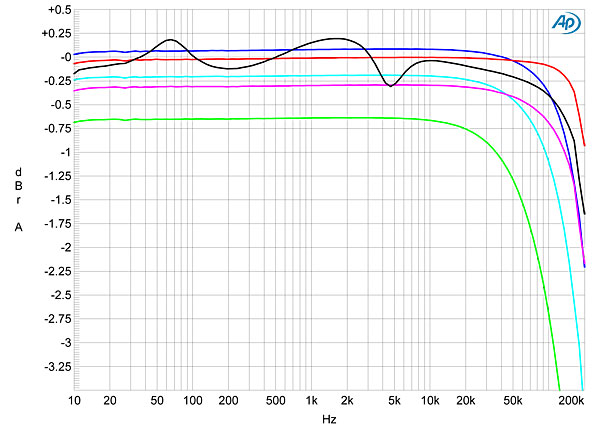
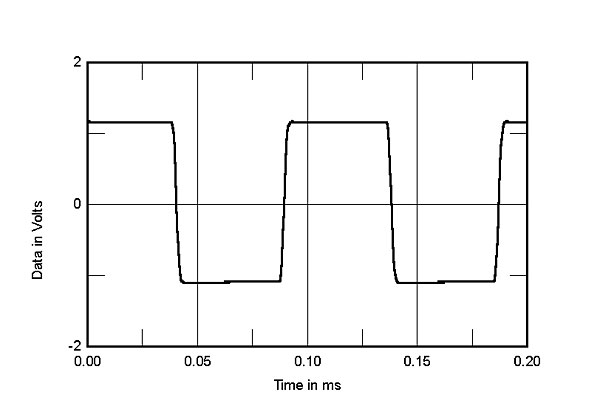
Given the AX-5's spaced, dual-mono construction, it wasn't surprising that its measured channel separation was superb, at >120dB below 2kHz. I measure an integrated amplifier's signal/noise ratios with its input shorted but the volume control at its maximum—cruel and unusual treatment for a conventional design, given that no one will listen to the amp at maximum volume. But the AX-5's unusual volume-control circuit makes this an appropriate test, and the amplifier's wideband, unweighted S/N in these conditions was an okay 72.4dB in both channels. Restricting the measurement bandwidth to the audioband improved the ratios to 81.8dB left and 82.7dB right, while switching an A-weighting filter into circuit gave a further improvement, to 85.6dB in both channels.
Looking at the low-frequency noise floor while the AX-5 drove a high-level 1kHz tone into 4 ohms (fig.3), no 120Hz components can be seen (other than low-level sidebands around the 1kHz tone), while the 60 and 180Hz components, which result from magnetic interference from the power transformer, are very low in level. The 180Hz spike lies at –110dB (0.0003%) in both channels; the 60Hz spike lies at –120dB in the right channel (0.0001%, red trace), –107dB in the left (0.0005%, blue).
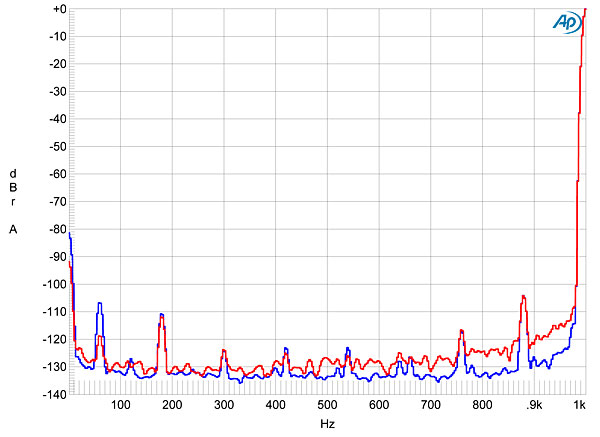
Figs. 4 and 5 show how the percentage of THD+noise changes with output power into 8 and 4 ohms, respectively. The minimum THD+N figure, which is where the actual distortion is about to emerge from the noise floor, is achieved between 2 and 5W, and is respectably low—almost 0.01%. That this was achieved without loop negative feedback is unusual, to say the least. With our usual definition of clipping as being when the THD reaches 1%, these graphs show that the AX-5 clips at 132Wpc into 8 ohms (21.15dBW), which is slightly higher than the specified 125Wpc (21dBW)—but at 205Wpc into 4 ohms (20.1dBW), which is almost 1dB below the specified 250Wpc (21dBW). I don't hold the wall power constant during these tests, which is why there was a shortfall into 4 ohms. Into 2 ohms (not shown), the Ayre clipped at 220W with one channel driven, with a higher level of distortion at lower powers.
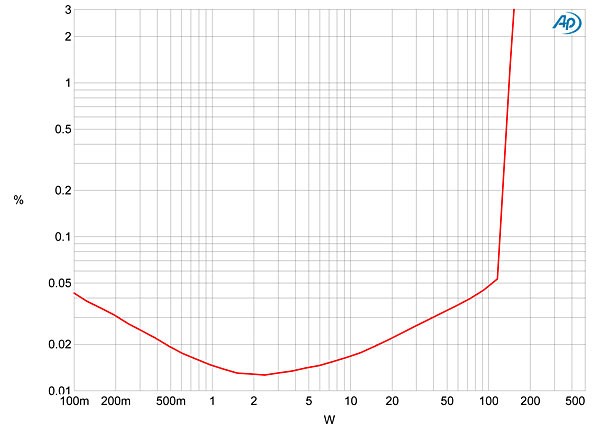
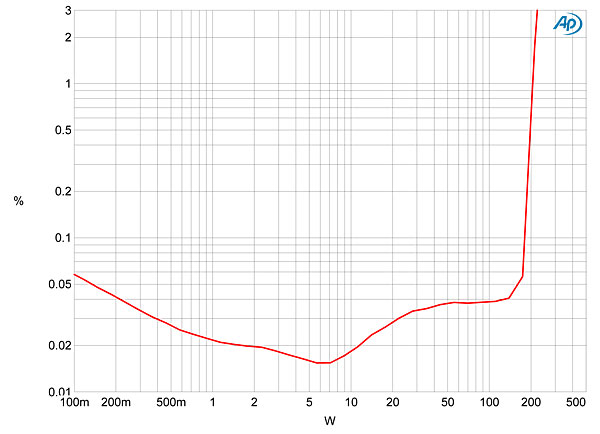
That the AX-5 was not as comfortable driving 2 ohms as it was higher impedances can be seen in fig.6. This plots the THD+N percentage against frequency at a level, 8.9V, equivalent to 10W into 8 ohms, where I could be sure I was looking at actual distortion rather than noise. Into 8 ohms (blue and red traces) and 4 ohms (cyan and magenta), the THD+N is very low and hardly changes with frequency, which again is a tribute to the zero-loop-feedback topology. But into 2 ohms (green), not only is the THD higher, but the level was a little unstable at the lower frequencies.
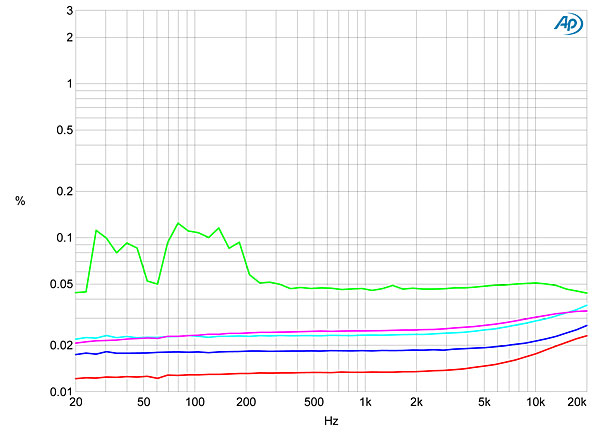
Commendably, the THD signature at moderate powers is almost entirely the subjectively innocuous second and third harmonics, even into 4 ohms (fig.7), though FFT analysis did uncover some fourth and fifth harmonics (fig.8). These higher-order harmonics were not seen at the same voltage level into 8 ohms (not shown), but they reappeared at high powers, even into 8 ohms (fig.9). With the demanding high-frequency intermodulation test, the zero-feedback design does result in a picket fence of distortion products at a power just a few dB below visible clipping on an oscilloscope (fig.10), though other than the high-order products at 18 and 21kHz and the difference component at 1kHz, these all lie at or below –90dB (0.003%). However, the two channels differed in the level of this difference product: it lay at a respectably low –104dB (0.0006%) in the right channel (red trace), but at –74dB (0.02%) in the left. This is still sufficiently low in absolute terms.
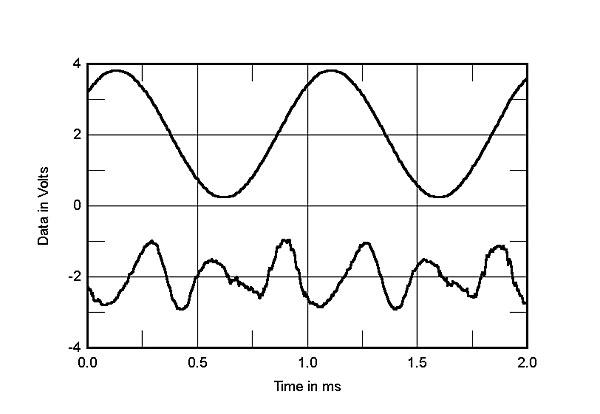
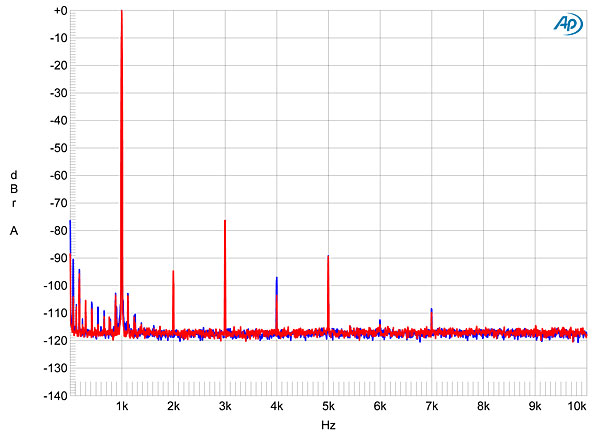
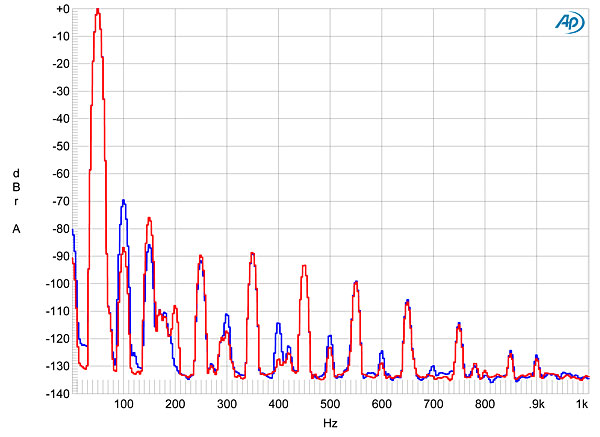
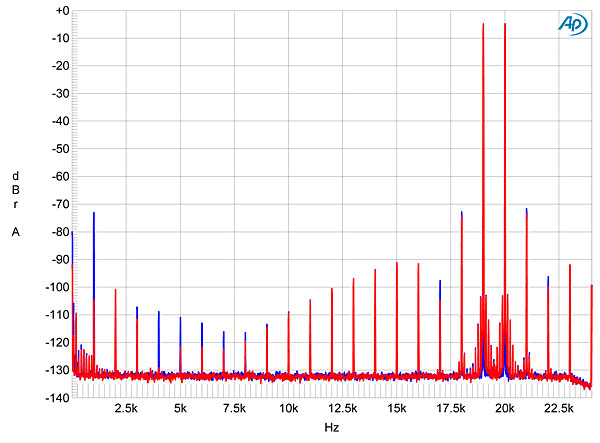
It was a pleasure to measure Ayre's AX-5, given its consistently good behavior on the test bench. Its wide bandwidth and low distortion despite the lack of overall loop feedback are a testament to the intrinsic linearity of the diamond circuit.—John Atkinson

The AX-5 is too rich for my blood. Shipping is undoubtedly free though any
extras would put you over the 5 figure price barrier.
The diamond cut circle is simple but not the best things. Superficial looks
mean the most in audio only. A 46 step volume system and Shallco switches, I guess justify Ayre going higher than most of their other products. I sure hope Stereophile shows an opened pic of future amp and it has a huge transformer in it like that. I have a tube preamp and solid state amp on my wish list but meanwhile I will use my Nano phono preamp.
Great job on the configuration and the review. You wouldn't want to spend too long on something like that!

So Art can I ask from what you remember from the AX-7 is the AX-5 a step up (same audio quality but more power) or a new league (sounds better than the AX-7)?